
All pics by author
Hello my Steeming Pals!
Italiano
Guerra Fredda
Attacco imminente! Arrivano missili, si salvi chi può!
Erano queste le parole che tutti temevamo durante gli anni della guerra fredda; gli anni in cui gli arsenali atomici di USA, Francia e Regno Unito si misurarono con i deterrenti nucleari del blocco Sovietico. La tensione tra le parti belligeranti era sempre accesa con andirivieni continui di massima allerta e periodi di temporanea distensione.
La caduta del Muro di Berlino ha diminuito di molto la probabilità di un conflitto atomico (soprattutto in Europa) ma non lo ha del tutto scongiurato e molte nazioni considerano il possesso di una “bomba” come un asset strategico, una forma di garanzia per la propria sopravvivenza.
Vi siete mai domandati che aspetto abbia un rifugio atomico “governativo” e che tipo di vita in esso si possa condurre?
Esistono molti rifugi “di stato” sparsi in tutta Europa, anche in Italia. Vennero costruiti per lo più tra gli anni 50 e 60 e molti rimangono tutt’ora operativi, pronti all’uso nel caso di un’emergenza. Altri (forse la maggior parte) da dopo il crollo dell’URSS, sono stati dismessi ed abbandonati. Pochissimi rifugi sono stati aperti al publico.
English
Cold War
Attention! Incoming missile strike imminent! Prepare for nuclear holocaust!
This was the last words of warning everyone feared during the cold war era, a time in which the nuclear arsenals of the West (USA, France and the UK), squared up against the Soviet Union’s very own atomic deterrents. Tensions between opposing factions was generally high, occasionally extreme, rarely relaxed.
Since the fall of the Berlin Wall the threat of nuclear conflict has diminished greatly but has by no means disappeared. In fact there is something of an ongoing arms race right now as developing nations assert themselves and challenge old orders.
Have you ever wondered what a “government” nuclear bunker might look like or what kind of a life you could expect hiding for months in an atomic refuge?
There are many such shelters scattered all over Europe. Most were built between in the fifties and sixties for government officials to use. Since the collapse of the Soviet Union many of these bunkers have been decommissioned, some have been converted to other use or abandoned, and a handful have been opened to the public as a grim reminder to all of the cold war era.
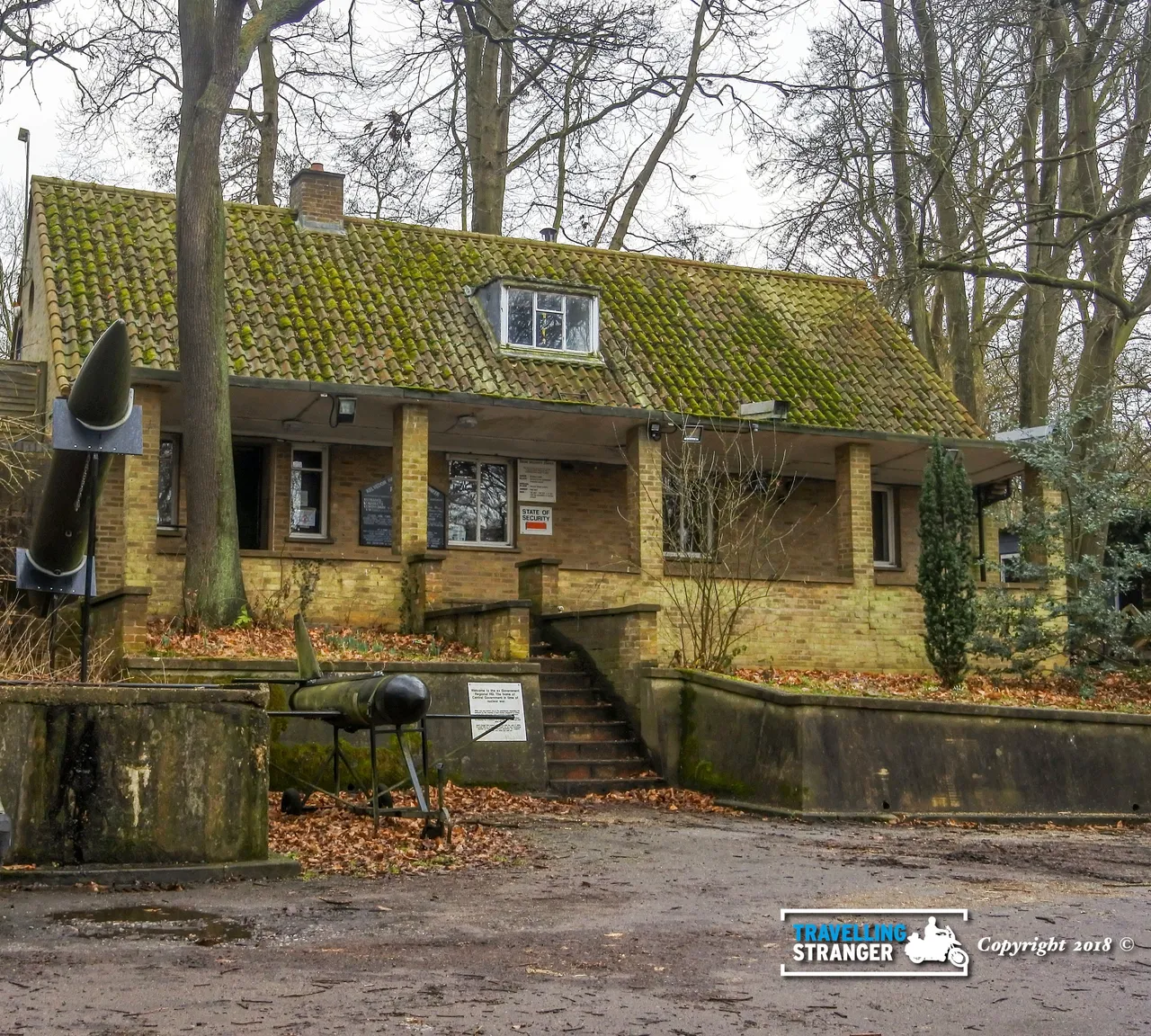 Inconspicuous entrance, just like a James Bond movie
Inconspicuous entrance, just like a James Bond movie
Bunker Aperti
Nel Regno Unito, a poche decine di chilometri a nord est di Londra, ne esiste uno. È il “cold war” bunker di Kelvedon Hatch costruito nel 1958 e dismesso nel 1992. Si tratta di un rifugio atomico di medie dimensioni in grado di ospitare circa 400 persone, ideato all’epoca della guerra fredda per ospitare i membri del governo regionale dell’Essex ed una quota del personale da esso impiegato. Il rifugio è aperto al pubblico da diversi anni e decisi di farvi visita in moto qualche settimana fa.
In puro stile “James Bond” l’ingresso del bunker è nascosto in mezzo ad un’area boschiva. Tra gli alberi si trova ciò che sembra essere ad una normale casa rurale in stile British. Tuttavia, oltrepassato l’ingresso lo scenario cambia radicalmente. Non v’è anticamera in questa casa, ne un salotto od una cucina ma un corridoio lungo che conduce a 38m di profondità sotto al suolo a due enormi portoni in acciaio (Blast Doors) che segnalano l’ingresso al pian terreno del bunker.
Open Bunkers
Not far from London there’s one such shelter, open to visitors, known as “Kelvedon Hatch”. It was built in 1958 served it’s purpose for 34 years and decommissioned in 1992. It’s a medium sized bunker with enough space to house around 400 people for a period of up to three months and was intended to house the Essex County government in the event of nuclear catastrophe. The site was opened to the public for some years ago and I decided to get on my bike and pay the place a visit.
Just like in the best James Bond movies the entrance to the bunker is concealed and inconspicuous. What appears to be a small farm house in the middle of a wooded area is actually something very different. Inside the premises there is no living room, no hall, kitchen or reception, just a long, down slopping tunnel that leads to two enormous steel doors (Blast Doors) through which you enter the bunker’s ground floor.
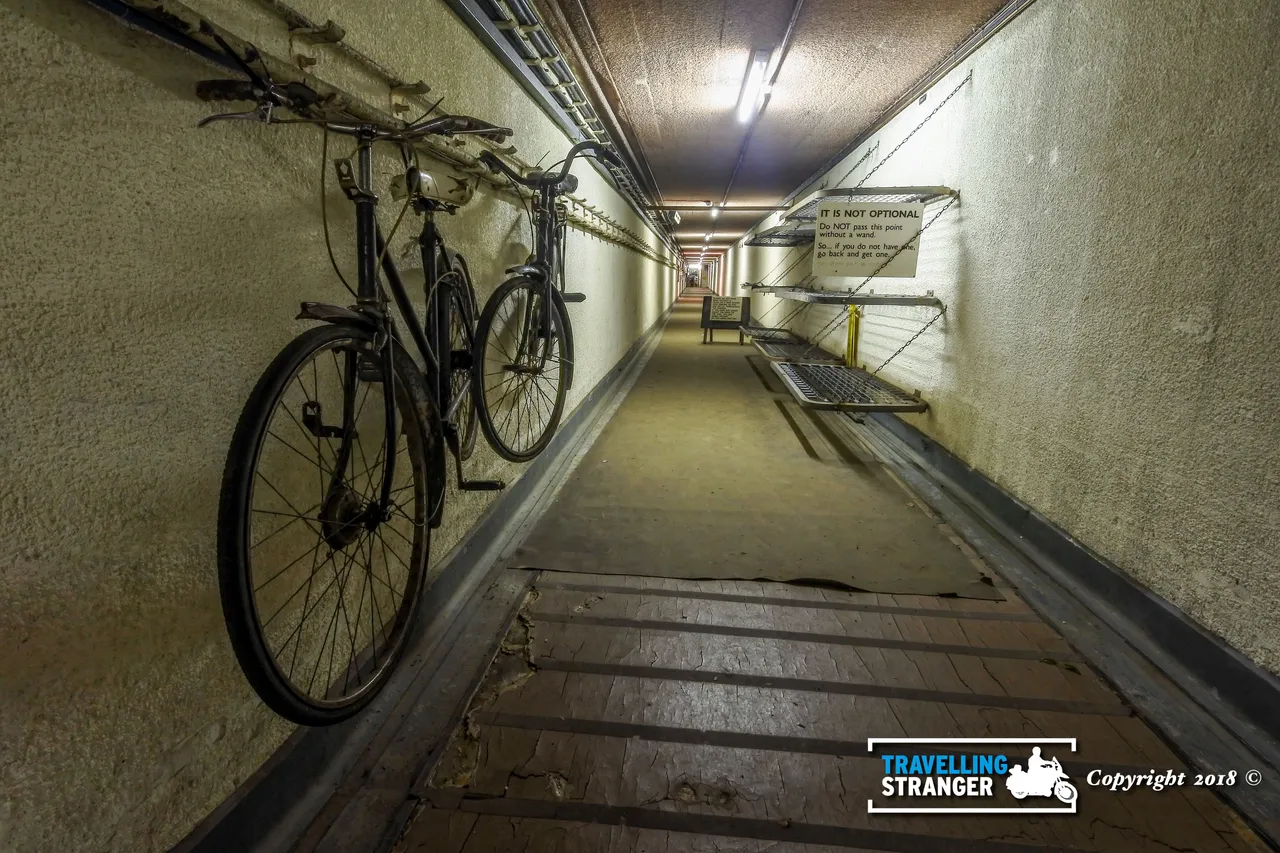 Tunnel to the Blast Doors
Tunnel to the Blast Doors
L’aria oltre ai portoni è pesante con un lieve odor di muffa. La luce delle lampade al neon abbaglia, non vi sono finestre e l’arredamento è scarno. I muri fino ad altezza d’uomo sono tinteggiati di verde turchese e poi di bianco fino al soffitto.
Finché il bunker era in funzione il pian terreno era dedicato alle comunicazioni con il mondo esterno. Nelle stanze trovai vecchie macchine telescriventi (telex), computer primitivi e console telefoniche. Gli ambienti erano piccoli ed angusti e senza alcun decoro. Feci fatica a credere che vi potessero lavorare decine e decine di persone senza nervosismi e crisi di claustrofobia.
Accanto al vecchi computer trovai la “Situation Room”, una sorta di tetra centrale operativa con mappe di tutto il Regno Unito riportate su lavagne luminose di vetro. Su di esse mi parve di capire che si sarebbero dovute tracciare le zone colpite dalle deflagrazioni e coordinare quindi le eventuali operazioni di soccorso.
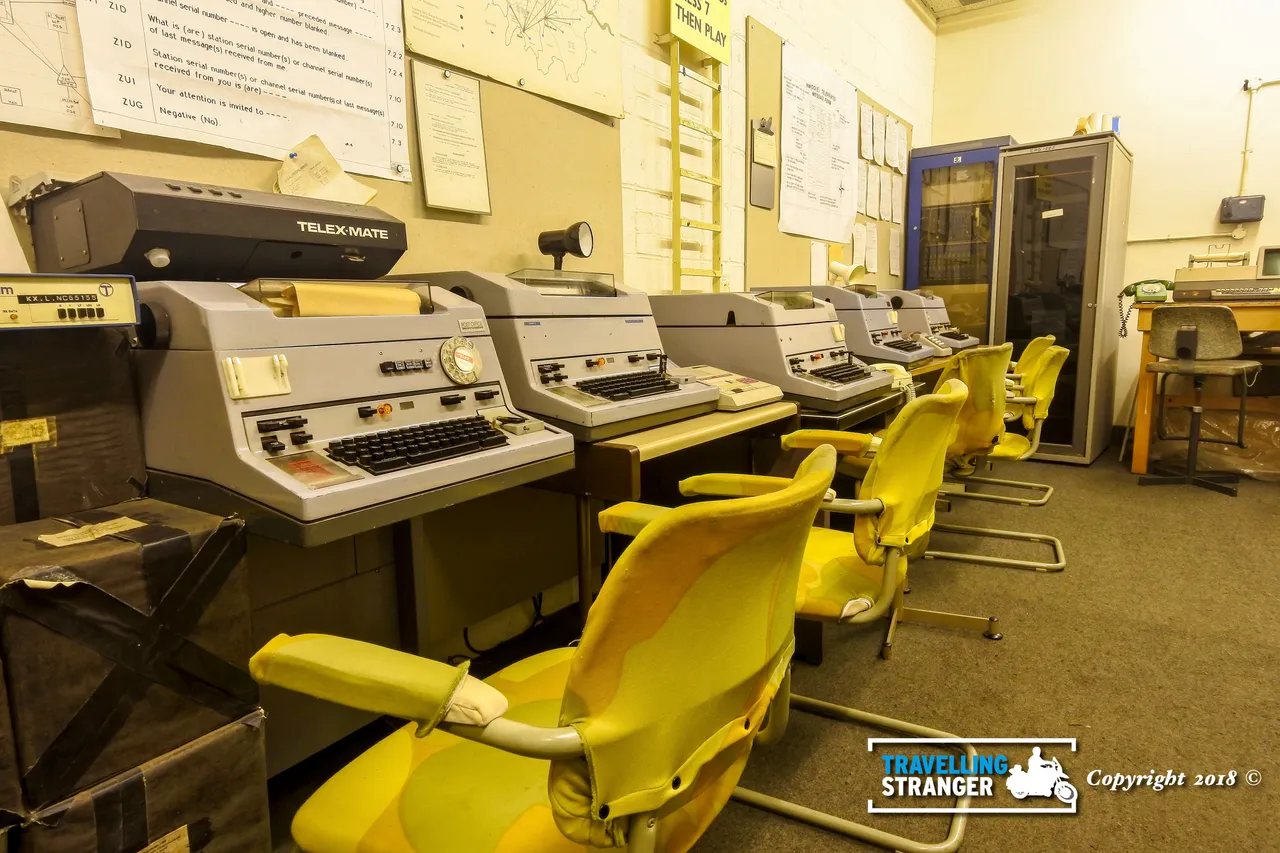
Ageing Telex machines gather dust
Al primo piano del rifugio si trovano gli alloggi (camerate) per i funzionari del governo regionale e gli uffici dei dipartimenti governativi. Il ministero dei trasporti, dell’agricoltura, della pubblica istruzione ecc. Capii che l’obiettivo del rifugio era quello di garantire la sopravvivenza ed il funzionamento dello Stato ad ogni costo e non permetterne l’obliterazione per opera di qualche bomba nucleare.
Su di una parete accanto alle scrivanie dei ministeri trovai accatastate decine di vecchi contatori geiger, abbandonati e per fortuna mai usati. Mi sembrarono un invito a riflettere sulla logica del “Mutual Assured Distruction”, dottrina tanto in auge durante la guerra fredda.
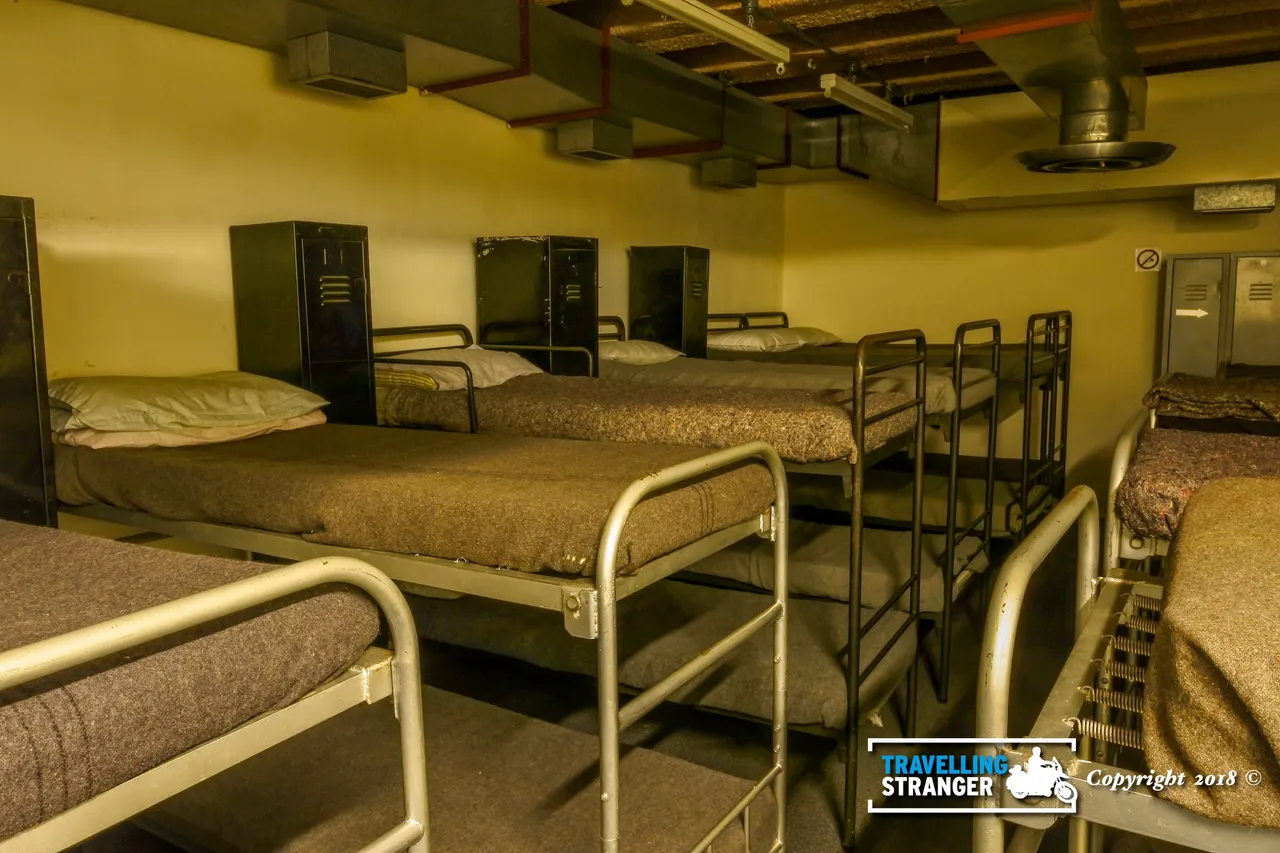 Bunk beds and little private space
Bunk beds and little private space
All’ultimo piano trovai l’infermeria con tanto di saletta operatoria e celle mortuarie. Dei manichini simularono tetramente un intervento chirurgico mentre nell’aria imperversava un odore pungente di formalina. In un angolo trovai esposta una bara di cartone pronta all’uso.
Ogni tanto tra le varie salette del bunker qualche schermo video riproduceva filmati degli anni 70 preparati dal governo britannico per educare la popolazione sul da farsi nell’eventualità di una catastrofe nucleare. È opinione oggigiorno che nessuno dei consigli elargiti avrebbe garantito la sopravvivenza della maggioranza della popolazione.
All’uscita dal bunker ove una volta v’era una garitta per militari, ora si trova un bar in cui è possibile acquistare sandwich e bevande calde. È un buon posto per sedersi e meditare su quanto visto nel rifugio.
Corridoi stretti, luce artificiale, acqua e cibo razionati, medicinali scarsi, letti da condividere ... mentre fuori, all’aperto chissà quale cupa realtà post apocalittica si sarebbe creata.
Avrei voluto essere tra i privilegiati del bunker ? Sarei stato in grado di abbandonare famiglia ed amici al loro destino atomico per servire un stato, un governo sepolto sotto terra?
Confesso che per un istante non seppi che risposta darmi.
Come arrivarci
Kelvedon Hatch è un’attrazione turistica nota che richiama migliaia di curiosi ogni anno. È aperta al pubblico tutti i fine settimana. Una ricerca su internet rivelerà senza problemi il sito ufficiale del bunker in cui sono riportati i giorni e gli orari di apertura.
A mio avviso è meglio visitare con un mezzo proprio. Dirigetevi vero Ongar, nell’Essex, e seguite da li la dicitura “Secret Nuclear Bunker” sui cartelli stradali.
Le coordinate geografiche del bunker sono:
N 51º 40’ 19.6”; S 0º 15’ 26.9”
Inside the air is cool and carries just a hint of damp to it. The neon lights are bright, there are no windows, there’s no natural light. The bunker walls are painted turquoise up to head height and then white to the ceiling. The rooms feel small, cramped, dusty and what little furniture there is seems minimal, old and worn.
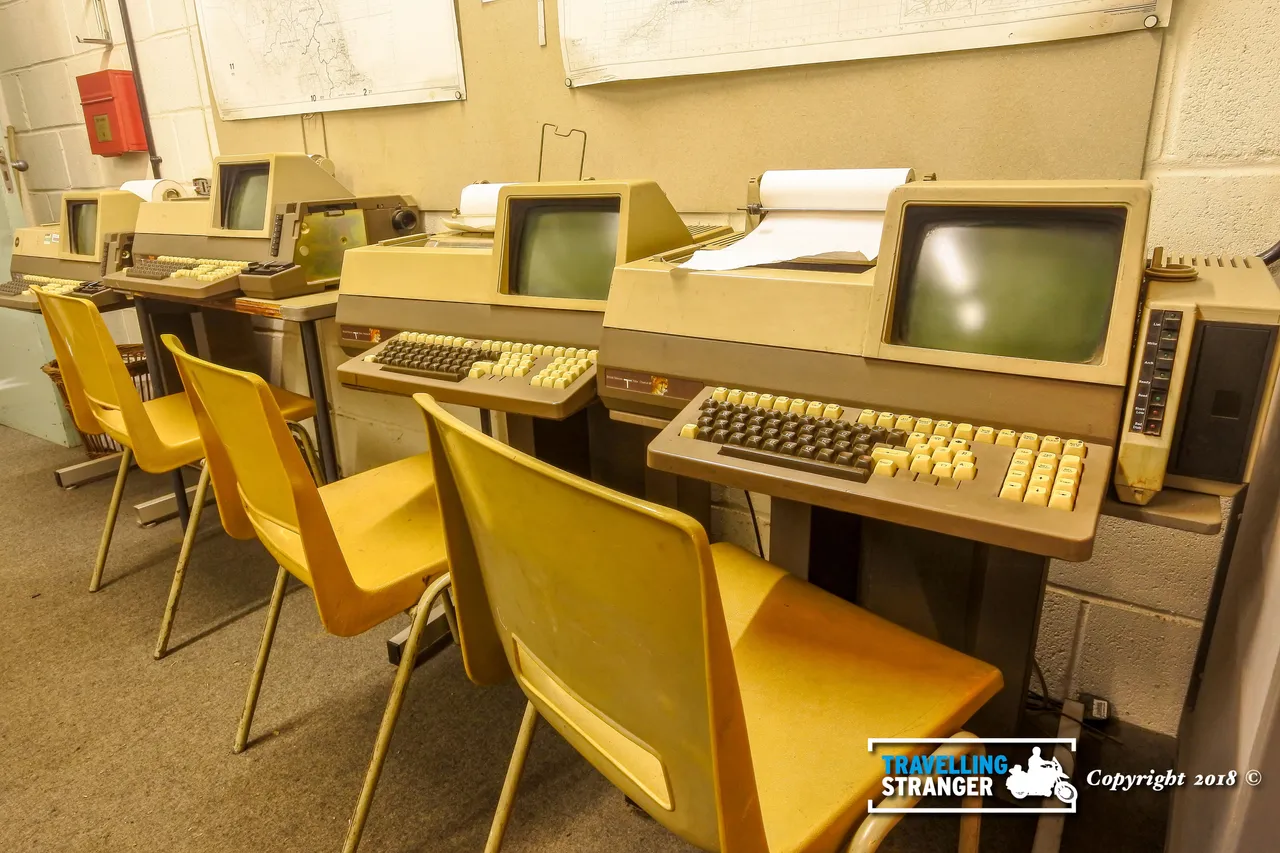 Primitive looking computers for coms with the outside world
Primitive looking computers for coms with the outside world
Clearly the bunker ground floor was reserved for communications with the outside world. The rooms I roamed through here were full of old telex machines, ancient looking computers, radio equipment and antique telephone exchange consoles. There was also the Situation Room, a kind of command centre in which bomb blast areas were recorded and aid operations coordinated.
On the bunker’s first floor I found the bleak and essential dormitories for government officials and staff. Next to these were the local government offices consisting of not much more than a desk and the odd computer here and there. Above each desk was a sign: the ministry of education, ministry of agriculture, the ministry of justice and so on. Clearly the plan was to keep the regional government functioning at all cost, even in the event of thermonuclear war.
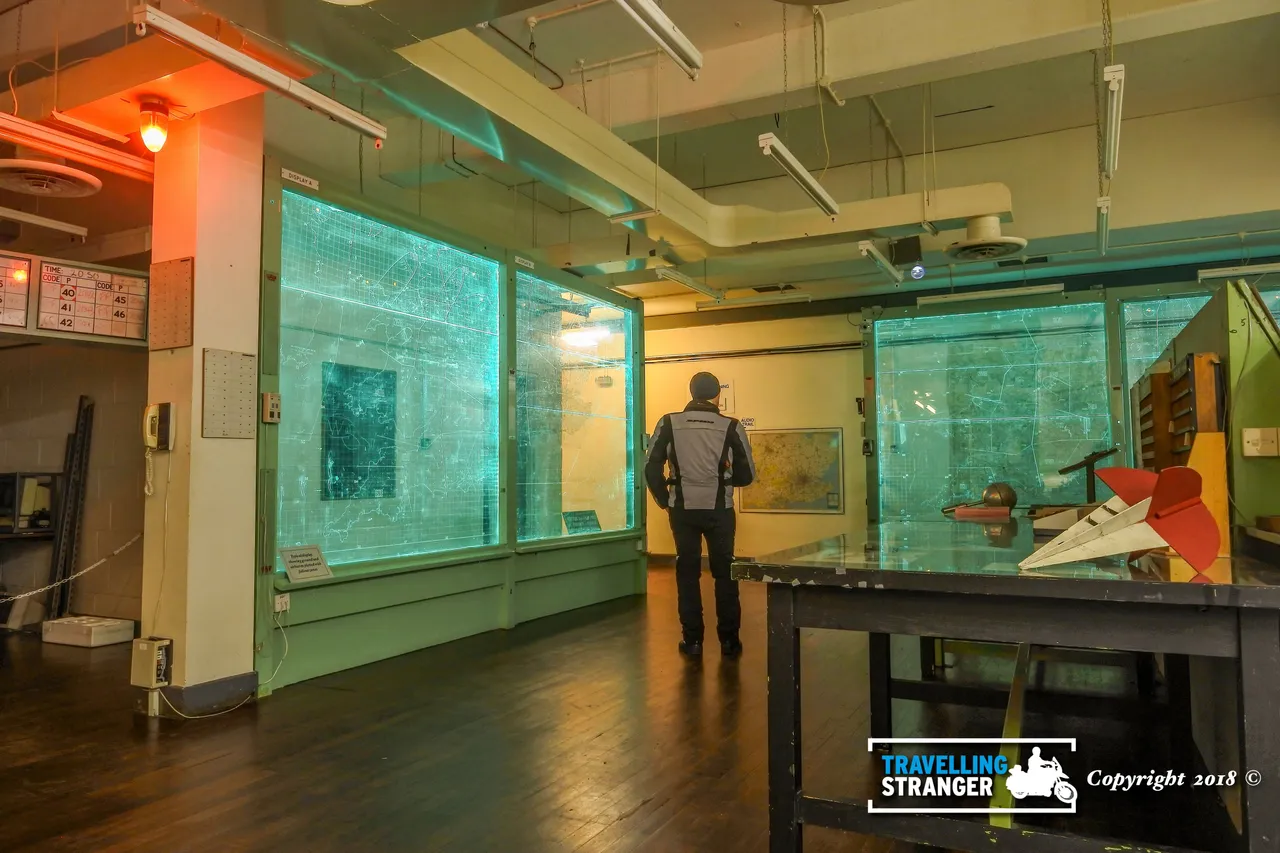 The Situation Room
The Situation Room
Against a wall next to the ministerial desks i noticed a pile of abandoned geiger counters, most of them probably never used at all. To me they seemed like a grim reminder of the consequences of the cold war acronym M.A.D. (Mutual Assured Destruction).
On the bunker’s top floor I came across the infirmary made up of a small operating table and morgue. A couple of mannequins were arranged to mimic a surgeon and patient. The neon lights gave everything a gruesome feel made worse by an empty cardboard coffin box on display in a corner and the pungent smell of methanal everywhere.
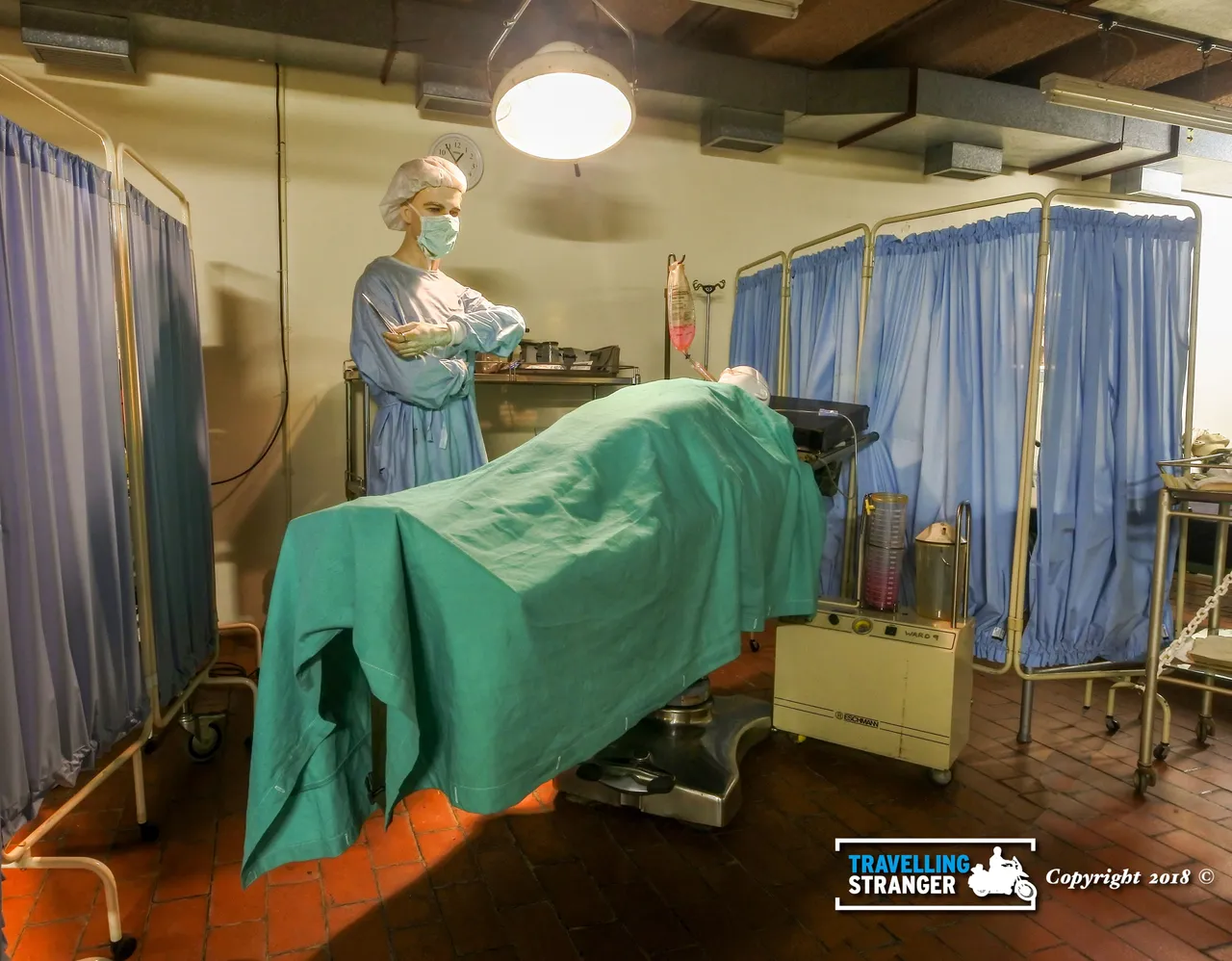
An essential surgery and morgue
Every now and then, between the rooms of the bunker there were video screenings of old cold war era government films designed to inform the public on how to survive a nuclear blast. The advice given is nowadays considered obsolete, useful at most to keep the populace occupied and avoid mass panic and hysteria.
At the bunker’s exit there’s a small caffe that serves hot refreshments. It’s a good place to stop and reflect on what the bunker is all about.
Narrow corridors, cramped rooms, rationed water and food, no sun light, total isolation whilst outside the bunker, in the real world a contaminated post apocalyptic wasteland takes shape. Would I ever want to be one of the “privileged” survivors inside the bunker whilst my loved ones died or were were left to fend for themselves?
For a moment I struggled to give myself an answer.
How to get there
Kelvedon Hatch is now a popular tourist attraction open most weekends during the year. The bunker’s website is easy to find on the internet for information about opening times.
The best way to get to the bunker’s location is without doubt by car. Public transport can be a little tricky.
Travel towards Ongar in Essex and then follow the signs for “Secret Nuclear Bunker”.
The bunker’s GPS coordinates are:
N 51º 40’ 19.6”; S 0º 15’ 26.9”
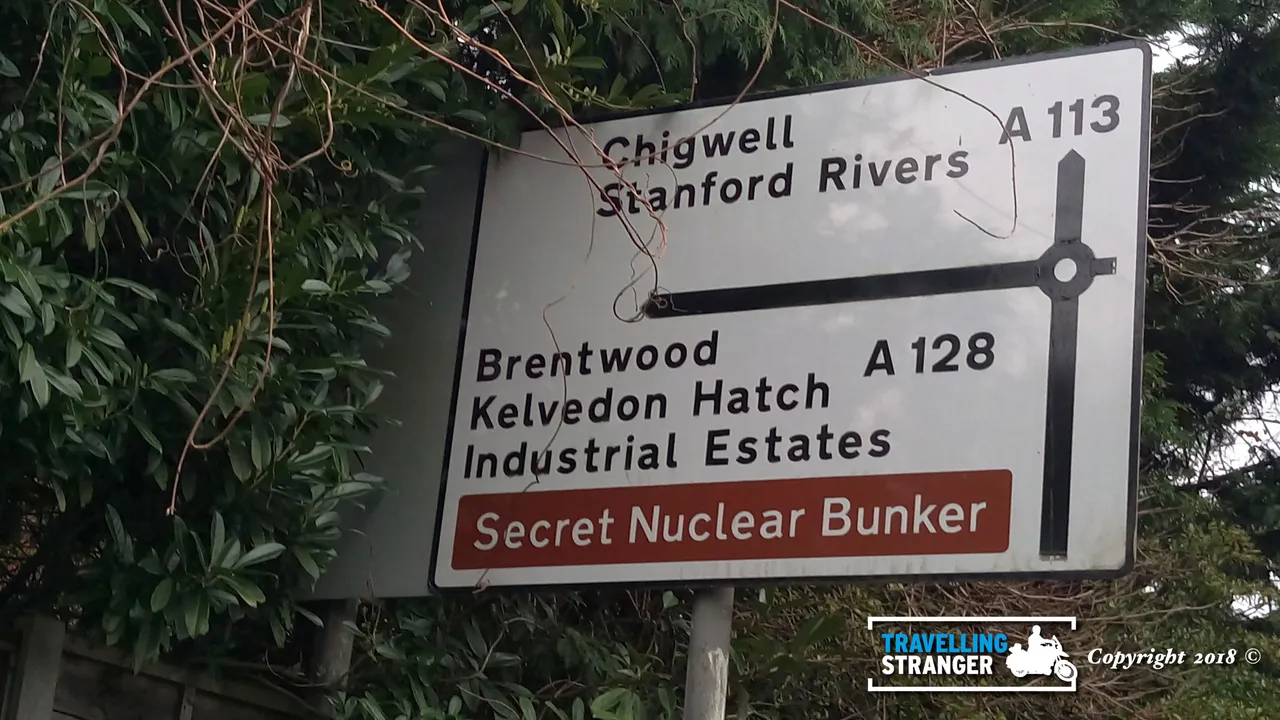
Directions to the bunker are pretty easy and obvious once in the vicinity of the location